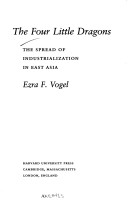The Edwin O. Reischauer Lectures
1 total work
Japan and the four little dragons - Taiwan, South Korea, Hong Kong, and Singapore - constitute less than one percent of the world's land mass and less than four percent of the world's population. Yet since the 1950s they have become, with Europe and North America, one of the three great pillars of the modern industrial world order. How did they achieve such a rapid industrial transformation? Why did the four little dragons gain such Promethean energy at this particular time in history? Ezra F. Vogel, provides an explanation of East Asia's industrial breakthough. While others have attributed this success to tradition or to national economic policy, Vogel analysis illuminates how the cultural backgound interacted with politics, strategy, and situational factors to ignite the greatest burst of sustained economic growth the world has yet seen. Vogel describes how each of the four little dragons acquired the political stability needed to take advantage of the special opportunities available to would-be industrializers after World War II.
He traces how each little dragon devised a structure and a strategy to hasten industrialization and how firms acquired the entrepreneurial skill, capital, and technology to produce internationally competitive goods. Vogel aims to pinpoint how institutions and cultural practices rooted in the Confucian tradition were adapted to the needs of an industrial society, enabling East Asia to use its special situational advantages to respond to global opportunities.
He traces how each little dragon devised a structure and a strategy to hasten industrialization and how firms acquired the entrepreneurial skill, capital, and technology to produce internationally competitive goods. Vogel aims to pinpoint how institutions and cultural practices rooted in the Confucian tradition were adapted to the needs of an industrial society, enabling East Asia to use its special situational advantages to respond to global opportunities.
